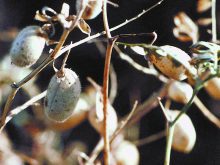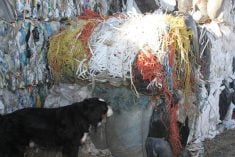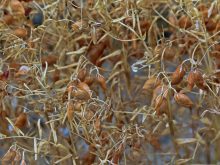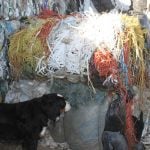NIPAWIN, Sask. – A strip of corrugated cardboard dipped in a mixture of lard and menthol may be the answer to controlling a mite that has devastated the bee industry.
The menthol strip is slid into the bottom of the hive late in fall. The mixture of lard and menthol creates an almost supercharged smell, driving the tracheal mites from the bees’ breathing tubes. The mites die once they leave the host bee.
Even the bees don’t think much of the smell. After about two weeks, when most of the smell has dissipated, the bees get rid of the pungent cardboard from their hives, said Bill Hamilton who created the strip on his Nipawin-area farm.
Read Also

Message to provincial agriculture ministers: focus on international trade
International trade stakeholders said securing markets in the face of increasing protectionism should be the key priority for Canada’s agriculture ministers.
“They chew the cardboard and pitch it outside.”
When Hamilton, his wife Katherine and their crew are dipping the cardboard, they wear respirators as protection from the strong menthol smell.
“It makes your eyes water … even your clothes you throw outside,” said Hamilton.
Although Canada has been able to limit damage from the tracheal mite, in the United States more than 500,000 colonies have died in the last three years.
Hamilton was one of the first Saskatchewan producers to detect tracheal mites in his hives about five years ago. Because the mite is microscopic, often producers don’t know their colonies are infested, until they find extremely high death losses over the winter.
Finding an effective control has become more important since the Saskatchewan border was closed to live bee imports in an attempt to slow the spread of the varroa mite. Saskatchewan is one of the few provinces that haven’t detected the varroa mite, which can also kill bees.
Demand from producers
Once Hamilton discovered the tracheal mites, he began working on a cheap, effective control. The cardboard strip was so successful in controlling mites in Hamilton’s own 1,200-hive bee yard, neighboring honey producers were soon buying the strips.
This year, Hamilton made about 30,000 strips for producers in Manitoba and Saskatchewan.
But the cardboard strips are only a control. At $1.20 a strip, it is difficult for beekeepers to justify more than one strip for each hive per season.
For total control, a second menthol strip should be added to kill hatching eggs. The lard and cardboard are not expensive, but the menthol, imported from the United States, accounts for about 75 percent of the cost.
Hamilton said he is reluctant to invest a lot of money into the business.
“We’re not sure if the market is there. We hate to put too much money into it, if it’s short term,” said Katherine.
“Right now, we’re filling a demand that’s there,” she said.














